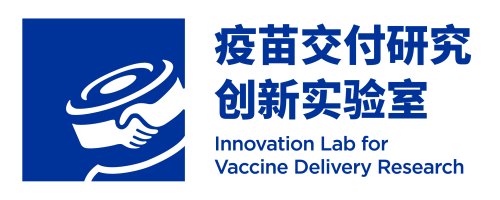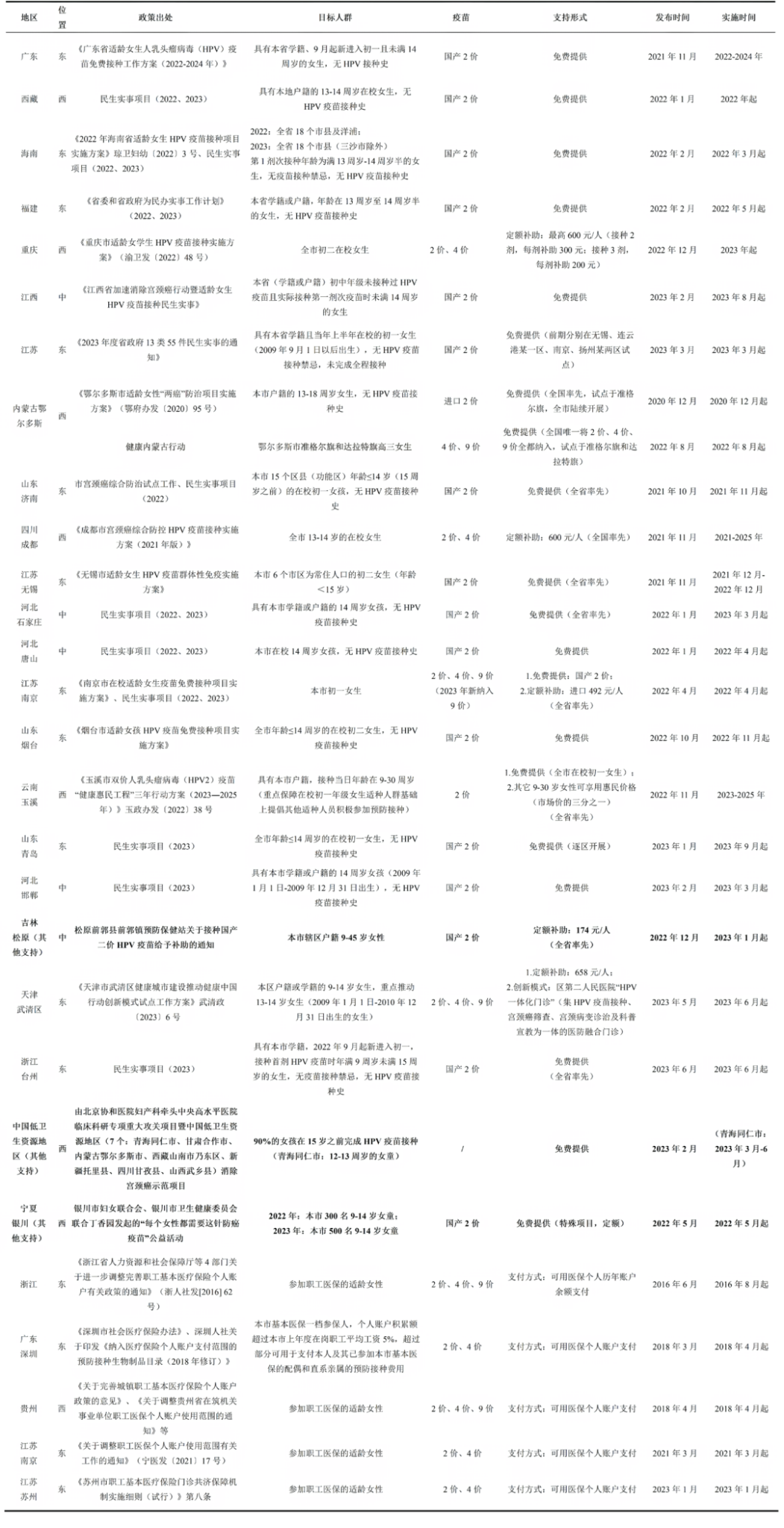Policy Guidance
01
WHO position paper on immunization to protect infants against respiratory syncytial virus disease, May 2025
In May 2025, the World Health Organization (WHO) released its first position paper on immunization to prevent RSV disease in infants. Grounded in scientific evidence, the document outlines a dual prevention strategy involving maternal vaccination and long-acting monoclonal antibodies (mAbs), providing guidance for Member States in formulating RSV immunization strategies.
The position paper identifies RSV as a leading cause of severe lower respiratory tract infections in infants globally, and recommends that countries select appropriate immunization products and promote implementation based on cost, funding sources, supply security, eligible population, and health system capacity.
With regard to immunization strategies, the paper proposes differentiated implementation pathways. In countries adopting maternal immunization, WHO recommends administration of a single dose of the RSVpreF vaccine in the third trimester of pregnancy (defined in most settings as ≥28 weeks’ gestation). The ideal vaccination window is more than two weeks before the expected delivery date, ensuring sufficient transfer of antibodies to protect the baby. Implementation during pregnancy facilitates high coverage through routine antenatal care (ANC) services and offers protection to high-risk infants such as preterm newborns. In countries adopting passive immunization strategies, early postnatal administration of nirsevimab is recommended, particularly under year-round immunization programs. If implementing a seasonal approach, the antibody should be administered before the onset of the RSV season, as well as at birth or the earliest opportunity for infants born during the RSVseason. The protective effect of monoclonal antibodies is strongest in infants under 6 months of age, although those up to 12 months may also benefit.
Regarding product selection, WHO notes that in the coming years, the price of RSVpreF vaccines is expected to be significantly lower than that of nirsevimab. Therefore, cost-effectiveness will be a critical factor in national immunization planning, particularly for low- and middle-income countries (LMICs). The effectiveness of the maternal immunization strategy relies heavily on ANC coverage during the third trimester of pregnancy, whereas the feasibility of the monoclonal antibody strategy depends on the system’s ability to administer the dose immediately after birth, which may be assessed by using BCG coverage as a proxy indicator.
For integrated immunization delivery, maternal vaccination can be incorporated into the WHO-recommended ANC service package, administered during the five routine visits during the third trimester, and supplemented through any health-care contact, including the outpatient services or routine immunization visits. Monoclonal antibodies should be administered soon after birth and before being discharged from the birthing facility; if not administered at birth, a catch-up dose should be delivered during the infant’s first postnatal health visit. For older infants under seasonal strategies, delivery can be aligned with routine immunization visits or scheduled child health check-ups.
On the choice of immunization schedule, WHO states that year-round immunization is more suitable for tropical and subtropical countries where RSV circulation is continuous or poorly defined. In contrast, seasonal immunization may offer better cost-effectiveness in countries with well-defined RSV seasons. Notably, completing immunization before the RSV season helps maintain antibody levels above the protective threshold throughout the transmission period, thereby prolonging the duration of protection. The seasonal nirsevimab schedule requires dose adjustment based on infant weight, making it suitable for both newborns and heavier infants.
https://www.who.int/publications/i/item/WER10022
Industry Update
01
Domestic-manufactured 9-valent HPV Vaccine Approved for Market
The 9-valent human papillomavirus (HPV) vaccine Cecolin 9, developed jointly by Xiang An Biomedicine Laboratory, Xiamen University and Wantai BioPharm, was approved for market on May 30th. . Produced using Escherichia coli expression systems, the vaccine covers seven high-risk HPV types (HPV16/18/31/33/45/52/58) and two low-risk types (HPV6/11), offering protection against diseases caused by infections from these HPV types.
Until now, the only 9-valent HPV vaccine available globally was Merck’s Gardasil® 9, which was approved in China in 2018 for use in females aged 9–45 andfor males aged 16–26 (approved in April 2025). Gardasil® 9 currently recommends a 2-dose schedule (at 0 and 6–12 months) for females aged 9–14, and a 3-dose schedule (at 0, 2, and 6 months) for females aged 15–45 and males aged 16–26.
The newly approved Cecolin 9 is indicated for females aged 9–45. A 2-dose regimen (at 0 and 6 months) is recommended for those aged 9–17, while a 3-dose regimen (at 0, 1, and 6 months) is recommended for women aged 18–45.
Source: Yufangjie Wechat (Official Account for China National Preventive Medicine Association)
Journal Article Recommendation
01
The intention and influencing factors of human papillomavirus vaccination among female students in the secondary vocational schools in East China: a cross-sectional study
This study, published in Frontiers in Public Health, adopted a cross-sectional design to systematically assess the intention to receive human papillomavirus (HPV) vaccination and its key influencing factors among female students in secondary vocational schools in East China. From September to December 2023, a cluster sampling method was employed to recruit 500 female students aged 16–20 from four secondary vocational schools in Changzhou. A total of 421 eligible participants were included in the final analysis. Participants were divided into two groups based on their HPV vaccination or appointment status, and factors associated with vaccination intention were analyzed.
The results showed that only 32.1% of respondents had received or scheduled HPV vaccination. Multivariate analysis revealed that HPV-related knowledge was not significantly associated with vaccination intention (p > 0.05). However, grade level, household economic status, household registration type (hukou), only-child status, and information sources were significantly associated with vaccination intention. Students in higher grades (i.e., those approaching graduation) were significantly less likely to express vaccination intention compared to those in lower grades (OR = 0.03, 95% CI: 0.02–0.07). In contrast, having an urban hukou (OR = 1.94), monthly living expenses ≥2000 CNY (OR = 2.19), being an only child (OR = 2.00), and receiving vaccine information from family or friends (OR = 2.34) were all positive predictors of vaccination intention (all p < 0.05).
The study noted that current local government policies offering free HPV vaccination are mostly targeted at girls aged ≤15 years, leaving senior-grade students uncovered and thus dampening their vaccination enthusiasm. It is recommended that targeted health promotion strategies be developed for high-risk groups such as students from rural areas, low-income families, and non–only-child households. Additionally, enhancing health literacy and decision-making support at the family level and optimizing information dissemination channels may effectively improve HPV vaccination uptake.
https://doi.org/10.3389/fpubh.2025.1467546
02
Policy recommendations for healthcare authorities, organizations and professionals on vaccine hesitancy in Europe: From evidence to practice
This article, published in Human Vaccines & Immunotherapeutics, focuses on the development of a governance framework for addressing vaccine hesitancy in Europe. Employing the Delphi method, the study involved two rounds of consultation with 112 experts from seven European countries, ultimately distilling 280 initial policy suggestions into 16 core intervention strategies. These were integrated into the ASTARE theoretical model, comprising six dimensions: Awareness, Support, Training, Agency, Recognition, and Engagement*.
The study emphasizes that effective vaccine policy should exhibit three key characteristics: Evidence-Based (grounded in scientific evidence and adaptable to evolving contexts), Collaborative (intersectoral coordination), and Adaptive (responsive to shifts in public perception). At the implementation level, a dual-track governance approach is recommended: on one hand, establishing standardized top-down guidelines; on the other, encouraging grassroots-level innovation within local healthcare institutions. Key measures include developing culturally adapted educational materials, optimizing appointment systems, and training vaccine communication specialists to enhance service accessibility and acceptability.
The study further stresses that addressing vaccine hesitancy is fundamentally a systemic endeavor of rebuilding public health trust. It requires a tripartite coordination mechanism among health authorities, healthcare institutions, and frontline professionals—spanning policy formulation, institutional implementation, and professional execution. The ASTARE model offers Europe an action-oriented framework that balances scientific rigor with cultural sensitivity. Its successful implementation depends on continuous monitoring, evaluation, and localized adaptation to ultimately boost public confidence in vaccines and increase coverage rates.
*Awareness: Health authorities should lead the dissemination of evidence-based, clear, and accessible vaccine information, and formulate policies to combat misinformation. Support: Healthcare organizations should enhance language support services and provide outreach to migrant and marginalized populations. Training: Vaccine communication skills should be integrated into continuing medical education to strengthen healthcare professionals’ capacity in health communication. Agency: Patient-centered communication techniques, such as motivational interviewing, should be promoted. Recognition: Guidelines should be developed to ensure vaccination services respect cultural diversity. Engagement: Service optimization measures—such as pain management protocols—should be implemented to improve the vaccination experience, along with response mechanisms for individuals with special needs.
https://doi.org/10.1016/j.healthpol.2025.105361
03
Respiratory syncytial virus preventives for children in Australia: current landscape and future directions
This article, published in the Medical Journal of Australia, provides a systematic review of the policy evolution and real-world outcomes of respiratory syncytial virus (RSV) immunoprevention in Australia during 2024–2025, with a specific focus on the clinical application and public health value of the long-acting monoclonal antibody nirsevimab and the maternal RSV vaccine Abrysvo.
Nirsevimab was approved in November 2023, and from 2024 onwards, states such as Western Australia and Queensland were among the first to incorporate it into government-funded immunisation programs, primarily targeting newborns born prior to the RSV season and high-risk infants. Surveillance data indicated a 71% immunisation coverage in Western Australia, with a 57% reduction in RSV-related hospitalisations; in Queensland, the hospitalisation rate for infants under 6 months decreased by 69% compared to the previous year. Observational studies from Europe also confirmed nirsevimab’s protective efficacy against RSV-related hospitalisation at 89.8%, with a 80.6% reduction in paediatric intensive care unit (PICU) admission risk. Compared with palivizumab, which requires monthly injections, a single dose of nirsevimab provides protection for five months, greatly improving treatment adherence and cost-effectiveness.
Beginning in February 2025, the federal government included the maternal RSV vaccine Abrysvo in the National Immunisation Program (NIP), offering free vaccination to pregnant women between 28 and 36 weeks of gestation, aiming to prevent RSV infection in infants aged 0–6 months. Phase III clinical trial data demonstrated a protective efficacy of 81.8% against severe RSV disease, with an adverse event rate comparable to the placebo group. For pregnant individuals who did not receive Abrysvo, or for high-risk infants requiring extended protection, state governments will provide supplemental nirsevimab, establishing a “maternal-infant coordinated immunisation” dual-protection strategy.
The study suggests that this dual-intervention approach has the potential to significantly reduce the burden of RSV-related hospitalisations and complications, with priority coverage recommended for high-risk local children and populations in remote regions. Key future priorities include enhancing data integration within the Australian Immunisation Register (AIR), conducting cost-effectiveness evaluations, and implementing long-term safety surveillance, in order to continuously optimise the national RSV prevention framework.
https://doi.org/10.5694/mja2.52671
04
Maternal Immunization With RSVpreF Vaccine: Effectiveness in Preventing Respiratory Syncytial Virus–associated Hospitalizations in Infants Under 6 Months in Argentina: Multicenter Case–control Study
This article, published in The Pediatric Infectious Disease Journal, adopted a prospective, multicenter, nested case–control study design to evaluate the real-world protective effectiveness of Argentina’s first implementation of the maternal RSVpreF vaccination strategy during the 2024 RSV season.
The study collected data from 187 hospitalized infants under 6 months of age with lower respiratory tract infections at four pediatric referral centers in Argentina between January and October 2024, including 91 RSV-positive cases (case group) and 96 RSV-negative infants (control group). All participants were born after March 15, 2024, following the launch of the national maternal immunization program.
The results indicated that the maternal vaccination rate was significantly lower in the case group than in the control group (17.6% vs. 44.8%, P < 0.001). After adjusting for potential confounders including age <3 months, prematurity, and chronic respiratory disease, the vaccine effectiveness (VE) against RSV-associated hospitalization was estimated at 78.7% (95% CI: 51.4%–90.7%). Further analysis demonstrated that RSV-positive infants whose mothers had received the RSV vaccine during pregnancy had better clinical outcomes than those whose mothers were unvaccinated, including shorter median length of hospitalization (5 days vs. 8 days, P < 0.001) and reduced duration of oxygen therapy (4 days vs. 7 days, P < 0.001).
As the world’s first real-world evidence on maternal RSV immunization from a middle-income country, this study confirmed the significant protective effect of the RSVpreF vaccine when integrated into routine immunization schedules, providing scientific support for the inclusion of maternal RSV vaccination in national immunization programs (NIP).
https://doi.org/10.1097/INF.0000000000004878
Content Editor: Ruitong Li
Page Editor: Ruitong Li





